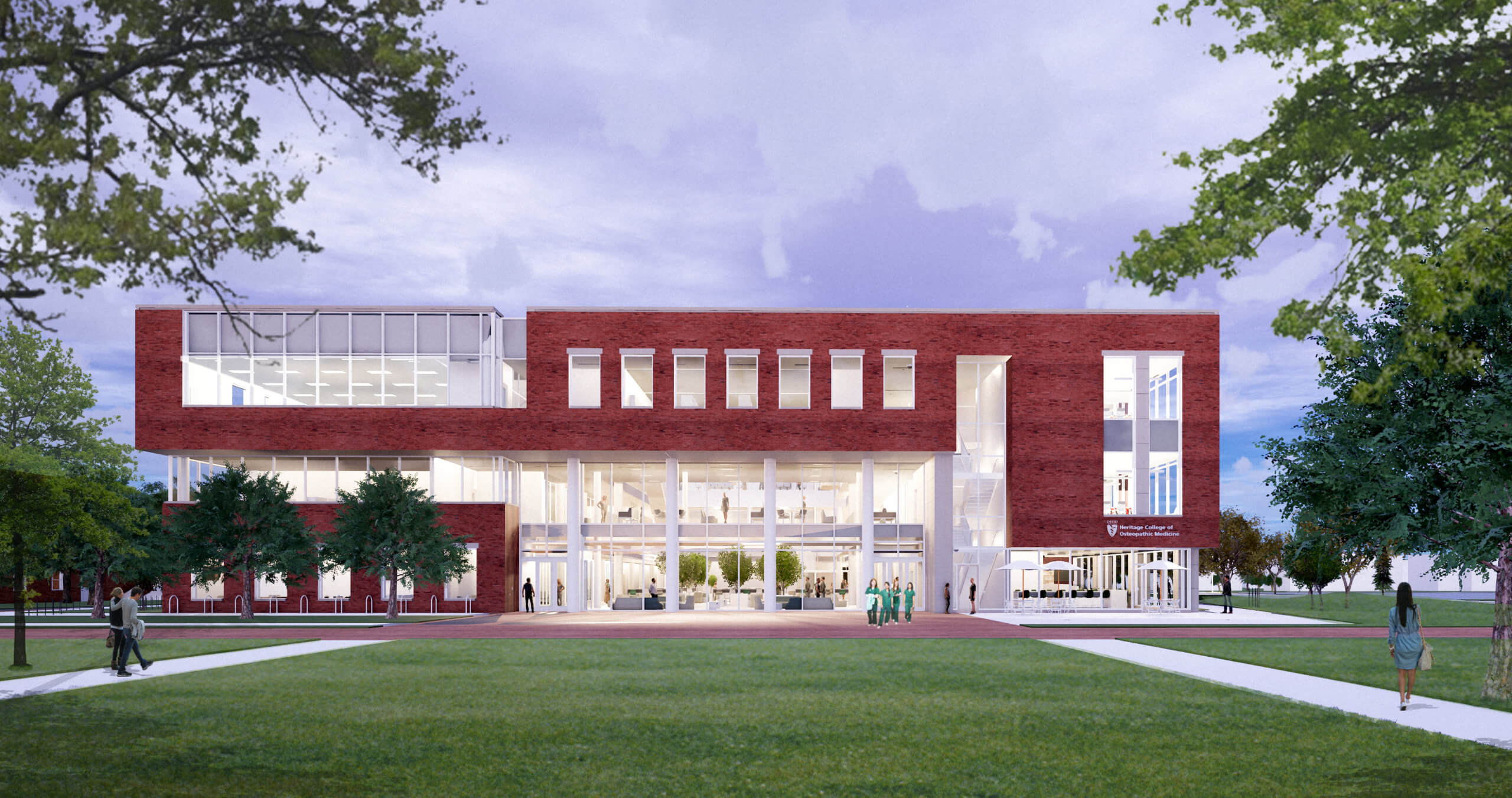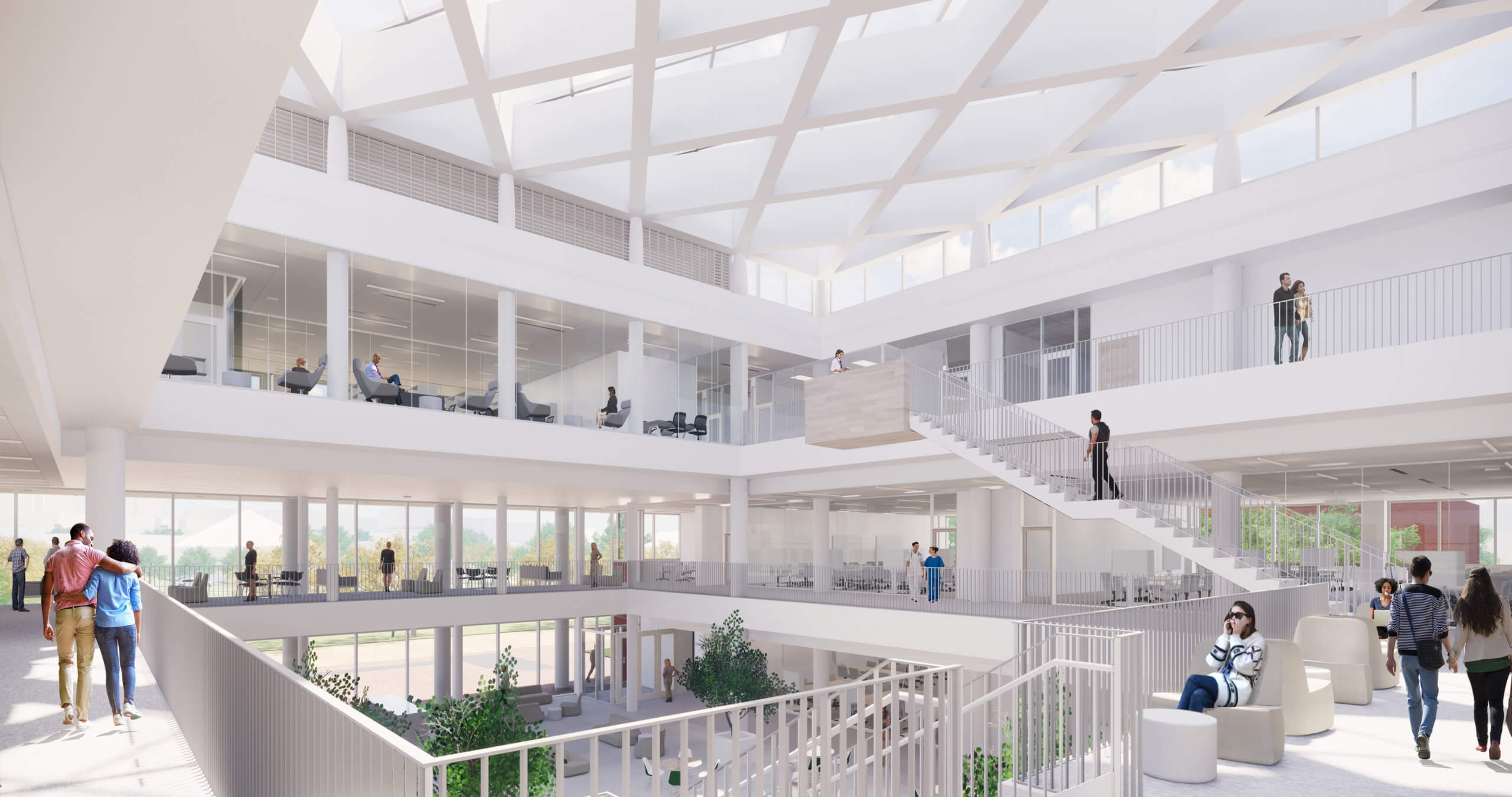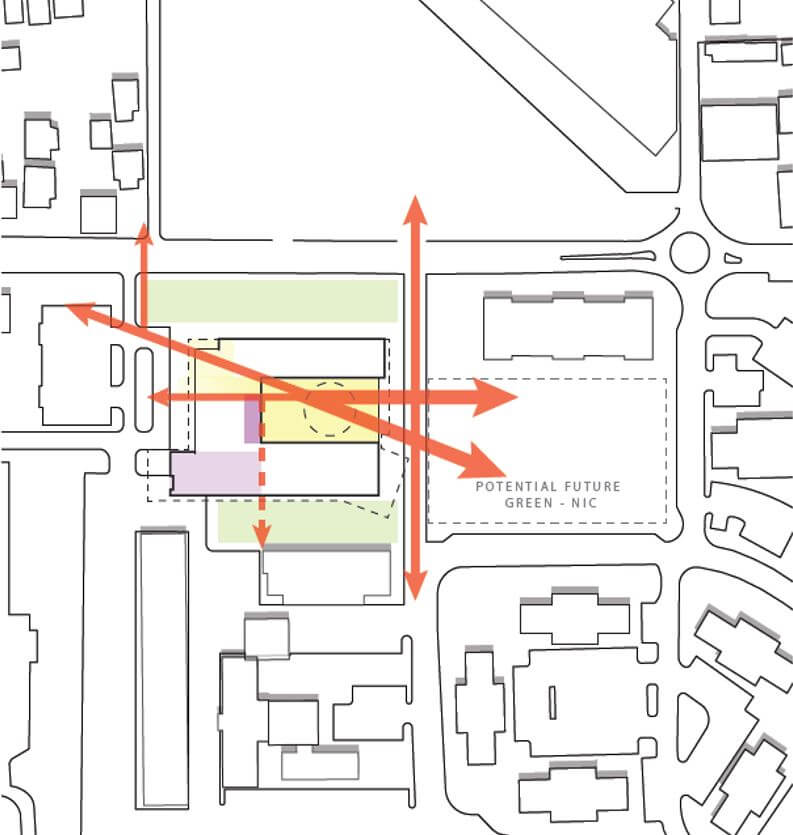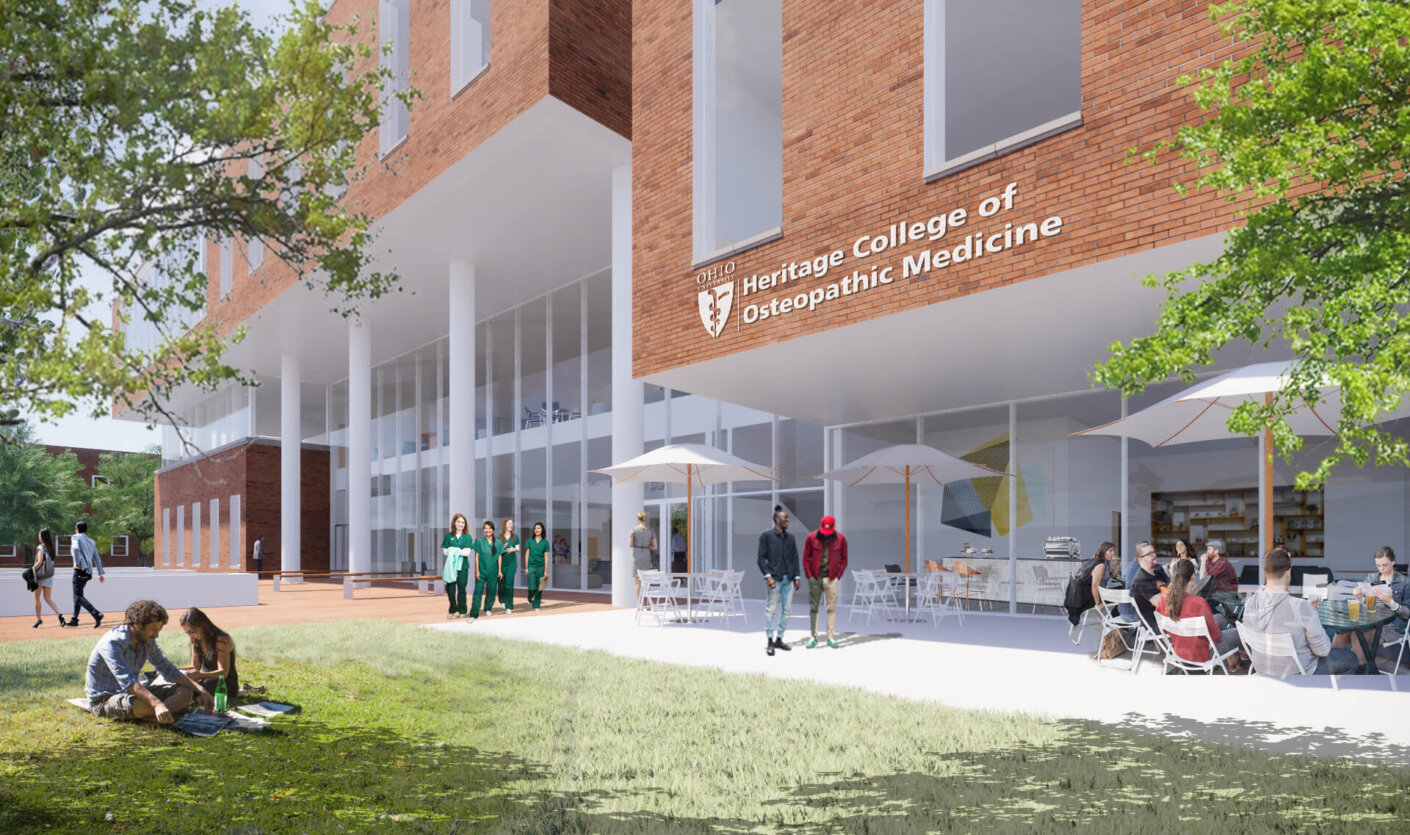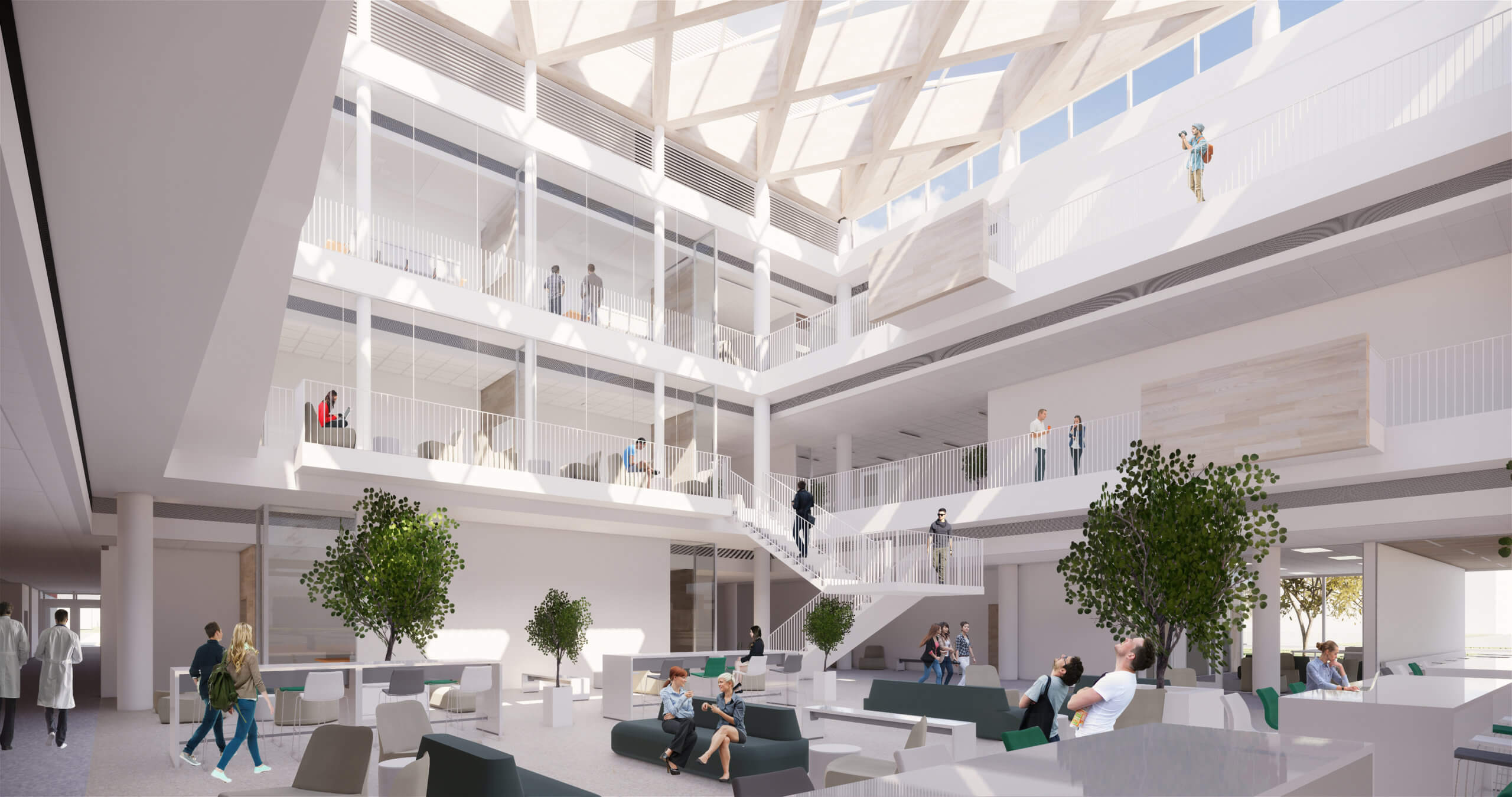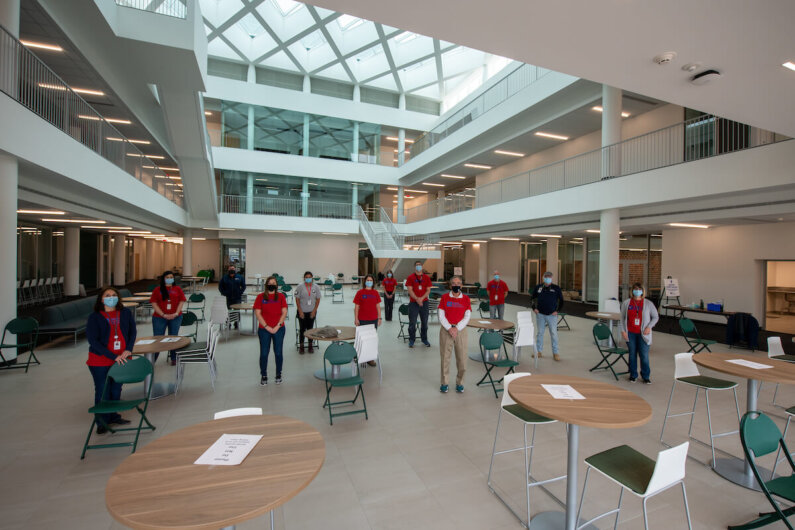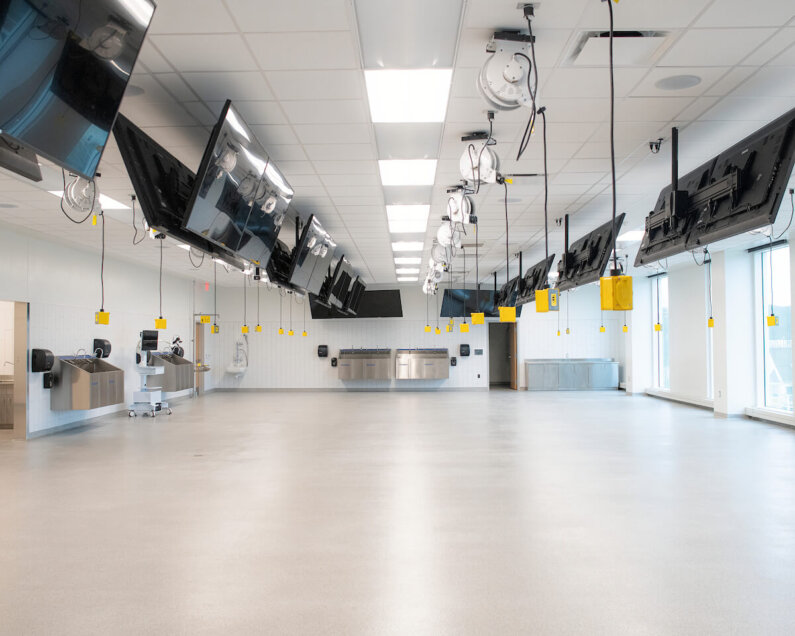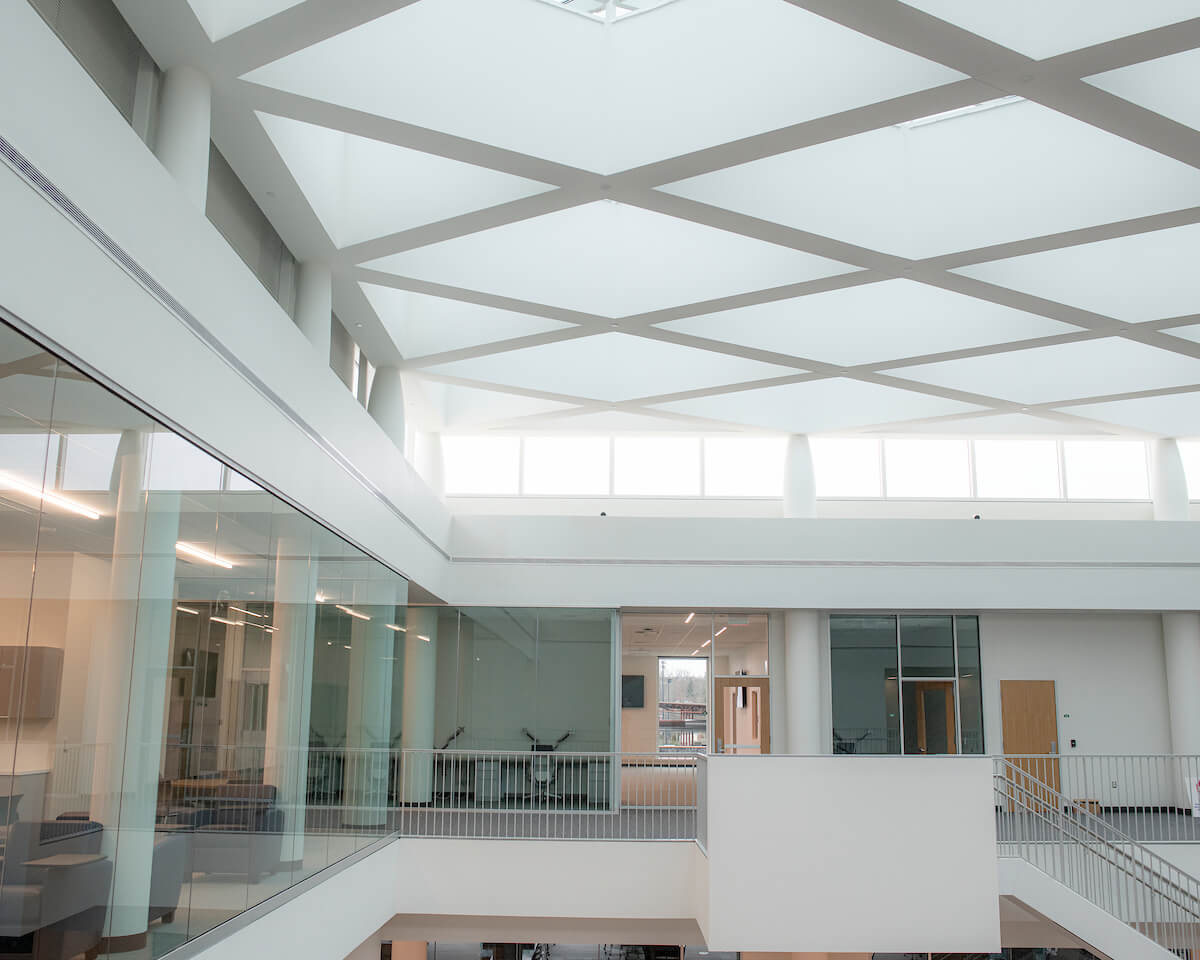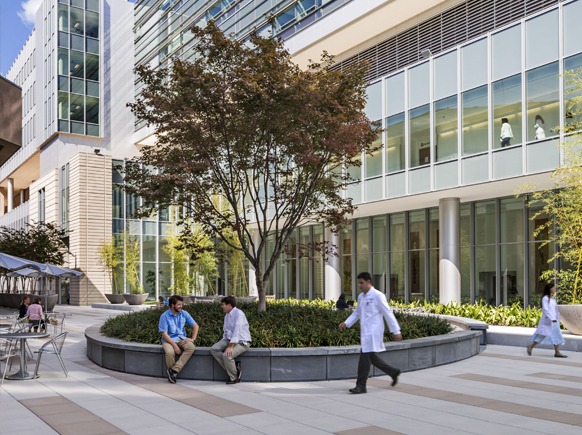With only a few finishing touches remaining, the Heritage College’s new three-story, 120,000-square-foot building reflects a new curriculum and forward-thinking learning spaces designed to prepare future physicians for careers in a rapidly changing health care profession. With its central, light-filled atrium, the flexible, team-based learning and teaching labs with sweeping outdoor views, a fitness center and meditation spaces, students and faculty will “bump into wellness” throughout Heritage Hall, said Kenneth Johnson, DO, Executive Dean of the Heritage College and Chief Medical Affairs Officer for Ohio University. “We built wellness into our curriculum and throughout every part of our space,” added Dr. Johnson.
While the red brick exterior reflects the surrounding historic campus buildings, the building design works in concert with the medical school’s new curriculum to push the boundaries of modern medical education. Crucially, it was the innovative Pathways to Health and Wellness Curriculum that drove the design, developed with our associated Ohio architects, Design Group. The three pillars of osteopathic medicine holistic health – mind, body, and spirit – are fundamental to the building design, expressed beautifully through its openness, infusion of light and a focus on wellness that encourage greater connections between individuals and more physical activity.
